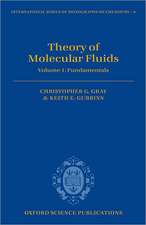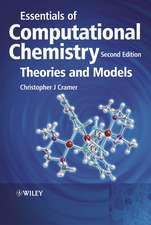Adhesion of Solids: Studies in Soviet Science
Autor B. V. Deryaginen Limba Engleză Paperback – 17 noi 2012
Din seria Studies in Soviet Science
-
 Preț: 394.29 lei
Preț: 394.29 lei -
 Preț: 381.59 lei
Preț: 381.59 lei -
 Preț: 385.47 lei
Preț: 385.47 lei -
 Preț: 385.84 lei
Preț: 385.84 lei -
 Preț: 390.25 lei
Preț: 390.25 lei -
 Preț: 401.61 lei
Preț: 401.61 lei -
 Preț: 382.57 lei
Preț: 382.57 lei -
 Preț: 387.75 lei
Preț: 387.75 lei - 5%
 Preț: 362.88 lei
Preț: 362.88 lei -
 Preț: 387.75 lei
Preț: 387.75 lei - 5%
 Preț: 360.70 lei
Preț: 360.70 lei -
 Preț: 389.88 lei
Preț: 389.88 lei -
 Preț: 397.16 lei
Preț: 397.16 lei -
 Preț: 386.81 lei
Preț: 386.81 lei - 5%
 Preț: 366.56 lei
Preț: 366.56 lei - 5%
 Preț: 717.73 lei
Preț: 717.73 lei -
 Preț: 389.49 lei
Preț: 389.49 lei - 18%
 Preț: 726.06 lei
Preț: 726.06 lei - 15%
 Preț: 635.65 lei
Preț: 635.65 lei -
 Preț: 380.45 lei
Preț: 380.45 lei - 5%
 Preț: 363.44 lei
Preț: 363.44 lei - 15%
 Preț: 637.93 lei
Preț: 637.93 lei -
 Preț: 387.96 lei
Preț: 387.96 lei
Preț: 397.16 lei
Nou
Puncte Express: 596
Preț estimativ în valută:
75.99€ • 79.56$ • 62.88£
75.99€ • 79.56$ • 62.88£
Carte tipărită la comandă
Livrare economică 07-21 aprilie
Preluare comenzi: 021 569.72.76
Specificații
ISBN-13: 9781461581918
ISBN-10: 1461581915
Pagini: 476
Ilustrații: XVI, 458 p. 73 illus.
Dimensiuni: 152 x 229 x 25 mm
Greutate: 0.63 kg
Ediția:Softcover reprint of the original 1st ed. 1978
Editura: Springer Us
Colecția Springer
Seriile Studies in Soviet Science, 1978
Locul publicării:New York, NY, United States
ISBN-10: 1461581915
Pagini: 476
Ilustrații: XVI, 458 p. 73 illus.
Dimensiuni: 152 x 229 x 25 mm
Greutate: 0.63 kg
Ediția:Softcover reprint of the original 1st ed. 1978
Editura: Springer Us
Colecția Springer
Seriile Studies in Soviet Science, 1978
Locul publicării:New York, NY, United States
Public țintă
ResearchCuprins
I. Introduction.- Literature cited.- II. Theoretical Concepts of the Role of Electrical Phenomena in the Breakdown of Adhesion and the Fracture of Solids.- §1. General remarks on the problem of adhesion.- §2. Principal conclusions from theory of electrostatic component of adhesion.- §3. Role of electrostatic forces in adhesion phenomena, and the relation between electrostatic interaction and the chemical nature of the contacting bodies.- §4. Analysis of macroscopic approximation in calculating the force of adhesion.- §5. Critical review of earlier studies.- Literature cited.- III. Experimental Investigation of Electroadhesion and Electrocohesion Phenomena in the Breakdown of Adhesive Contact of Solids and the Fracture of Crystals.- §1. Introduction.- §2. Neutralization of electrical double layer charges by gas discharge in the process of detachment.- Gas discharge phenomena in the process of detachment.- Emission of radio waves in breakdown of adhesion.- Residual surface charges after detachment.- §3. Relationships for polymer film detachment in liquid media.- §4. Effect of ionizing radiation on adhesion.- §5. Obtaining adhesive contact by the action of an external electric field.- §6. Gas discharge phenomena during fracture of crystals.- §7. Exoelectron emission.- §8. Emission of fast electrons in adhesive contact breaking or crystal cleavage.- Topography of emitting surface and influence influence of mechanical working on emission.- Velocity of emitted electrons and adhesion.- Emission intensity and adhesion.- §9. Influence of chemical nature of contacting surfaces on intensity of fast-electron emission 92 Emission of fast electrons in fracture of crystals.- Electron emission in deformation and abrasion of polymers.- §10. Properties of surfaces freshlyformed by breaking an adhesive bond or by mechanical breakdown of polymers.- §11. Radiation effect of fast electrons.- Literature cited.- IV. Theory of the Electrostatic Component of Adhesion.- §1. The electrical double layer caused by donor-acceptor bonding at boundaries between amorphous solids, and its role in adhesion phenomena.- §2. Investigation of general relationships in behavior of electrostatic component in contact of a metal and a semiconductor with an arbitrary spectrum of surface states.- §3. Role of surface properties in double-layer formation and adhesion phenomena.- Calculation of electrostatic component of adhesive force at the contact of a metal and a semiconductor with surface states of two types.- Statement and solution of the problem.- §4. Determination of specific force of adhesion (sticking pressure) upon contact of a metal with a semiconductor film.- §5. Study of adhesive force with semiconductor interlayer between two metals, and correlation of results.- §6. Role of tunneling in breakdown of double layer.- Literature cited.- V. Electroadhesion Phenomena on Semiconductors.- §1. Introduction.- §2. The space-charge layer.- §3. Surface recombination velocity.- §4. Surface states of semiconductors.- §5. Methods of investigating semiconductor surfaces with formation of an adhesive contact.- Dc field-effect method.- Photoconductivity decay method and determination of minority carrier lifetime.- Combination field-effect method with large sinusoidal signals and steady-state photoconductivity.- Monitoring the operation of semiconductor devices.- Method for determining contact potential difference.- Method for determining electrophysical parameters of polymer/semiconductor surface and adhesion in vacuum.- Specimen preparation.- Etchinggermanium specimens.- Application of polymeric films to semiconductor surfaces.- §6. Investigation of changes in electrophysical properties of germanium surface when an adhesive bond is formed.- §7. Electrical phenomena in breaking adhesive bonds between semiconductors and polymers.- §8. Comparison with theory.- §9. Methods of protecting germanium surfaces by application of varnishes and treatment with organosilicon compounds.- Literature cited.- VI. Adhesion of Dielectrics.- §1. Introduction.- §2. Interfacial chemical interactions of polymers an and functional groups.- §3. Investigation of contact surface by IR spectroscopy.- §4. Relation between electroadhesion phenomena and the chemical structure of interfacial compounds.- §5. Methods of regulating adhesion properties.- §6. Chemistry of adhesion interactions.- Literature cited.- VII. Sticking of Polymers.- §1. Introduction.- §2. Factors in strength of adhesive bonding between polymers.- §3. Role of polymer chain diffusion in mechanism of sticking and self-sticking of polymers.- Literature cited.- VIII. Sticking and Adhesion of Convex Solid Bodies and Powders.- §1. Introduction.- §2. Thermodynamic theory of adhesion at “convex” contact.- Influence of forces of adhesion on contact deformation.- §3. Sticking and adhesion of particles in liquid media.- §4. Study of the sticking and adhesion of surfaces in liquid media.- Modeling the interaction of colloidal particles.- Crossed-fiber method.- Simulation of colloidal particle interaction on the basis of the crossed-fiber method.- §5. Influence of liquid medium on particle sticking.- Adhesion of spherical particles in a liquid.- Interaction of particles in the presence of capillary-condensed liquid.- Influence of liquid bridge.- Influence of relativevapor pressure on particle adhesion.- §6. Sticking and adhesion of particles in a dry atmosphere.- §7. Kinetic adhesion and tack..- Literature cited.- IX. Influence of Adhesion on Friction.- §1. Influence of electrical double layer on rolling friction.- Electrical component of rolling friction.- §2. Investigation of the velocity dependence of rolling friction as a method of studying adhesion.- §3. Influence of adhesion on external sliding friction.- Literature cited.- Conclusion.- A. Methods of adhesiometry.- Pendulum adhesiometer of Deryagin.- Bifilar adhesiometer of Deryagin.- Three-roll adhesiometer of Deryagin.- Rotating-plate method of Deryagin and Krotova.- Determination of adhesion of nonwetting liquid to solid surface under nonequilibrium conditions.- Methods of measuring adhesion in liquid media.- Roll adhesiometer.- Vacuum roll adhesiometers.- Adhesiometers with present detachment velocity.- Adhesiometer with periodic detachment.- Determination of adhesion with ultra-centrifuge.- A. The form of a strip during detachment.- C. The effect of contact deformation on particle adhesion.- Background.- Determination of the shape of the surface of a spherical elastic particle near the zone of particle contact with a flat rigid surface.- Macroscopic calculation of sticking force with allowance for contact deformation of ball.- Summary.- D. The effect of discrete structure of charges of the double layer on the electrostatic component of adhesion.- Literature cited.










